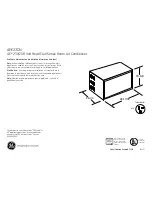
ENGLISH
Thermal Insulation
Ⓐ
Liquid piping
Ⓑ
Gas piping
Ⓒ
Power cable
Ⓓ
Insulation
material
Ⓔ
Communication
cable
Power
cable
Communication
cable
Fully insulate the connection
parts.
Separate
Piping insulation
Piping insulation
Have them
overlap.
Band
Adhere so that there are no gaps.
Indoor unit main body
- Loosen the flare nut of the indoor unit's piping connection port, insert it into the liquid
pipe and the gas pipe, and then conduct flaring work on the ends of each pipe.
- Insulate each of the liquid pipes and gas pipes using insulation material for piping.
Applies to
Insulation material
standard (mm)
(besides normal
conditions for residential
use)
Insulation material Standard (mm) -
residential
Insulation
material
standard (mm)
(unfavorable
conditions)
If installed in an air-
conditioned place
(CASE 1)
(ex: bedroom, living
room, etc.)
If installed in a
non-air-conditioned
place (CASE 2)
(ex: hallway,
outdoors, etc.)
Refrigerant
piping
dimensions
(mm)
EPDM
EPDM
EPDM
EPDM
Gas piping
6.35
9.52
12.7
15.88
19.05
22.22
25.40
28.58
31.75
38.1
44.45
19
19
19
19
19
19
19
19
19
25
25
13
13
13
13
13
13
19
19
19
19
19
19
19
19
19
19
19
19
19
19
25
25
19
25
25
25
25
32
32
32
32
32
32
Liquid piping
6.35
9.52
9
9
9
9
12.7~
44.45
13
13
13
13
h
Normal conditions: Temperature of 30 °C, relative humidity of 85 %
h
Unfavorable conditions: Temperature of 30 °C, relative humidity of 90 % (humid places such as
bathrooms, swimming pools, etc.: air supply and exhaust fan installation)
- do the insulation work as it is showing below
(piping insulation must be at least
19mm thick)
11
INSTALLATION OF INDOOR












































